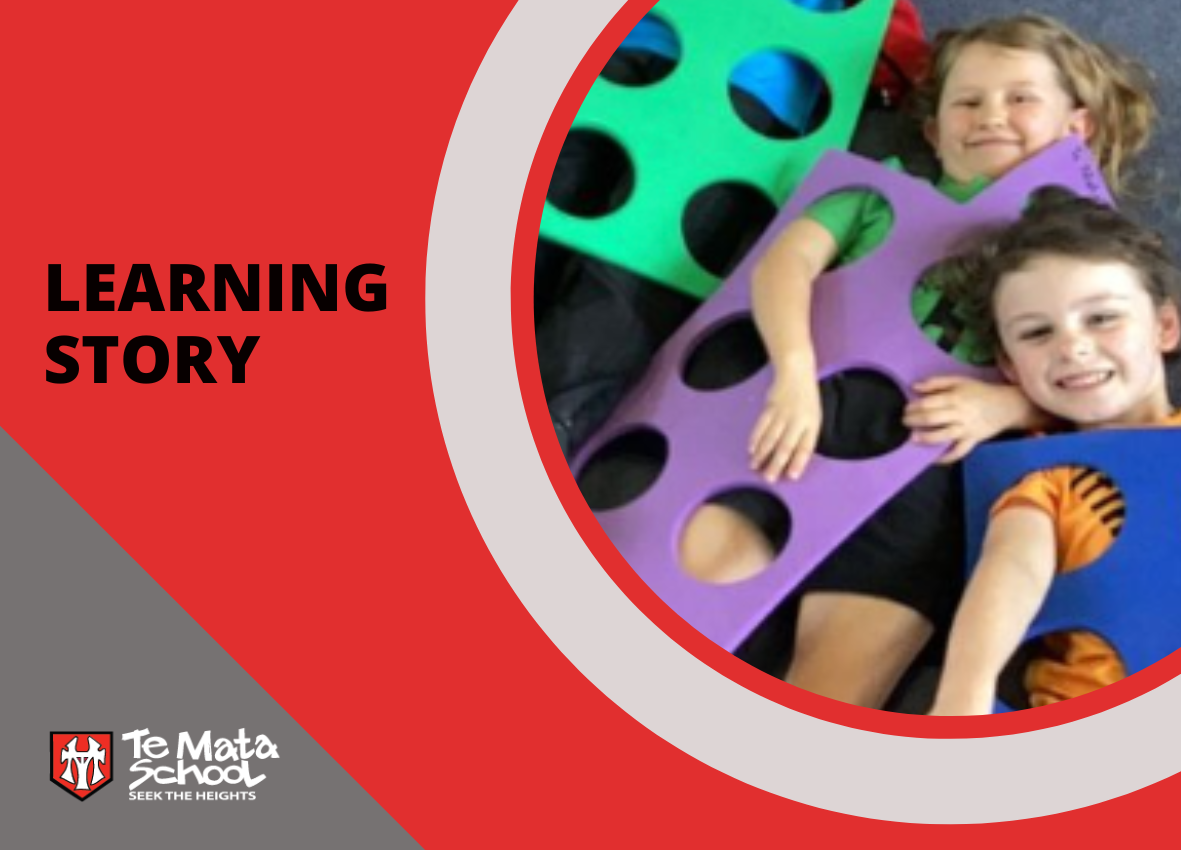


Plastic Shapes + Holes + Rods = Math
#Juniors

Using coloured Numicon Shapes and patterns, as well as Cuisenaire Rods and place value equipment allows children to build their numbers sense - Numicon meets all learners learning needs!
Your child’s first few years at school are most crucial, linked to their overall Maths development and understanding. At Te Mata School, our Junior School is using a programme called Numicon as part of their balanced approach to teaching mathematics. “Numicon is a distinctive multi-sensory approach to children's mathematical learning that emphasises three key aspects of doing mathematics:
The Numicon scope and sequence is being used by our Junior school teachers to help ensure learners have opportunities to learn about all facets of maths in enjoyable ways. They are involved in teacher-led group sessions that are hands-on, experience based. Students are also given the opportunity to practise skills and knowledge, supported by the teacher, after working in a group setting. Students are also given time to apply their new learning independently or with a peer. Concepts are revised and built upon overtime vs learners only being taught a concept for a block of time, then not revisiting it till next year. Overall, our learners are learning to thrive as we equip them with mathematical capabilities, knowledge and skills.
What does this look like? Sound like? Feel like? Below is a snapshot from our Junior School:
Students are actively engaged in structured, explicit lessons linked to the ‘Numicon’ Maths Scope and Sequence, which is aligned to the Mathematics & Statistics New Zealand Curriculum.
When learning something new learners start with ‘concrete’ materials e.g. shapes/equipment, then will move to the ‘pictorial’, the drawing phase and then to abstract. Students spend time manipulating, sketching and articulating what they discover and notice (concrete & pictorial), then they begin to be able to think about and visualise such ‘abstract’ things as number lines, place value, fractions, and even numbers themselves. Here they are able to complete maths problems in rich contexts independently.




- Making clapping/stamping patterns then converting them to rods and then numeral patterns.

- Making 10 in a visual way with the Numicon shapes.

- Making numbers in different ways.
- Clear support is provided through the use of explicit teaching instruction.
- The use of manipulatives/equipment to ensure learners are able to picture the maths/patterns.

- Students identifying the Numicon Shapes and Cusinene rods by colour and linked facts e.g. that 3 is a yellow (Numicon Shape), it is one more than two, it is one less than four, it is an odd number and as a Cusinene rod it is green, the rod is 3cm long.


- Students using whiteboards and writing in books - completing practise worksheets or rich problems.


- Use of interactive software that includes the equipment they know and understand, as well as scales to enable them to learn the meaning of equals.

Robust milestone tracking, assessment to enable teachers to identify strengths and areas of future development.
So what do our learners think, feel and do?
A group of Year 1 learners were making teenagers with the Numicon shapes. It is important to put the 10 next to the 3, as when we write thirteen is 1 ten and 3 ones. 10, 11 and 12 are not teenagers - 13, 14, 15, 16, 17, 18, 19 all have ‘teen’ at the end of them. They all made books with the teenagers in them.

Maths stories or sums are set in word contexts. When adding horses in a Year 1 class, learners used the shapes to help them. Five horses and two horses is how many? “I did 5 + 2 = 7 with the red five and a light blue two”. Another child said, “5 + 4 = 9, the nine sits on top of the 5 and the 4. The answer is 9” Students are learning to know that maths is something that happens in the real world, but are supported through the use of Numicon shapes.
Students in a Year 2 class said, Numicon are little blocks with holes, you can get them with your fingers. We make numbers with the Numicon. I like making numbers with the Numicon and doing maths. We don’t need to count with our fingers when we use the Numicon.
Another group of Year 2 learners commented that their teacher finds out what they need to learn next by using the Numicon shapes. “We like adding, plusing the shapes together”.
Our Te Mata children love Structured Literacy, so to hear a child say, “oh, I thought we were using the Numicon feely bag” shows that they are just as enthusiastic about maths learning now.
Further links and information:
Article added: Friday 12 April 2024


Contact
Location